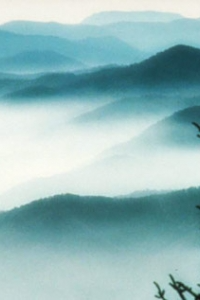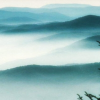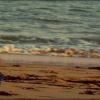Leh Laddakh - An untouched, beautiful, high altitude, Indian vacation destination. An exceedingly tough unpredictable treacherous terrain, where temperatures dip to -30 degrees C, not just protected and guarded, but also maintained, by the Indian armed forces. A place where space is infinite and time is timeless. An endless place where you can keep on going and never need to stop. A place without destination because the journey has no end. A place where elements of nature collide yet coexist. A place where you can't go just once. A place which is inviting, alluring, enrapturing, mesmerising and ensnaring...unwilling to let go of you.
So, I started packing for the much looked forward to Leh vacation, with four parts excitement and one part reserve. Reserve, because we were flying into Leh with our 4 and 6 yr old little ones and didn't know how the acclimatisation process would go for all of us and especially them. Once packing was all done, the D day finally arrived. Bubbling with excitement, we boarded our aircraft from T3 Delhi. It was a short flight, but oh! what a memorable one. As we neared Leh, the landscape was no longer the pretty but regular, cloud formations that we see from the aeroplane. Snow capped, multi-hued, river streaked, glorious Ladakh-Zanskar ranges stretched below us, for as far as the eyes could see, miles and miles stretching across the horizon. I clicked as many pics as I could, and of course not one of them captures or does justice to the scenery below. This also will be my constant refrain for the entire duration of the trip. Yes, we have managed to take some great pics, some superb and wow ones too, some courtesy our camera phones, some courtesy the expert camera and expert clicking skills of our dear friend who accompanied us. Still, I wish there was a camera lens equivalent to the human eyes. If only.
We landed (more like nose-dived to avoid hitting the giants around us) in a little airstrip completely surrounded by mountains, our first view of Leh. Adrenaline pumping in exhilarating anticipation we entered the world of grey. bitter cold and glittering, biting sun! On Day 1, we just settled in and rested and slept a lot while giving time to our lungs to get acclimatised to the rarified air.
On Day 2, we woke up super early (who can remain asleep when you have Leh to explore) and headed out. Our first stop was Thiksey Monastery, followed by Secmol School. Secmol (conceptualised by Sonam Wangchuk) is a school based on the concept of conservation of energy. It is run almost entirely on solar energy. They take in 40 students every year (grade 11 / 12) students who aren't able to absorb themselves into mainstream schools. These 40 students are given vocational training and are taught concepts of energy conservation and utilisation, and recycling and reusing materials. These students undertake projects and themselves design better energy conservation devices than the ones presently in use. The school has design labs, a library, a power house, 3 nurseries, small beds where they grow fruits and vegetables, store houses for vegetables, food grains stores with dispensers, amongst several other things. Their kitchen is run on the solar energy directed by two huge solar panels, two reflectors and a few solar ovens. The meal times are structured into watching news channels, discussing the current affairs, singing songs and discussing personal goals and achievements. They even create their own ice skating rink during the winter months. We came back impressed with the great work being done and the enthusiasm of the students.
Our third stop for the day was the confluence point where the two rivers Indus and Zanskar meet. It was over an hours drive from Secmol school. The drive being more adventurous than any of us had anticipated. It was our first encounter with the forces of nature at Leh. We got caught in the middle of a sand storm, we could see sand flying all over the barren stretches around us and sometimes forming patterns in the wind and sometimes just huge gusts of sand. We smelt and tasted it on our lips, realising that nothing can keep the dust and sand out, not even locked car doors and rolled up windows, it finds crevices to wiggle its way in. We could hear the sand hitting the outside of the car from all sides. We could hear it bellowing with the wind. We kept going in the haze ahead with visibility gradually reducing. We took a pause wondering whether to continue or turn back when the mountain beside us decided that very moment to pelt down at us. The decision made, we zoomed ahead, leaving behind us the hail of stones. Luckily for us, the sand storm subsided enough for us to step out of the car at the confluence point.
It was beautiful. Even in the cold winds and cloudy sunless skies, it was beautiful. The two rivers meeting in the middle, one lighter and clearer, the other muddier, carrying silt. Emerging from between mountains forming the various crests and tops, mountains close to us, mountains far away, bare brown, weather beaten, tall mountains all around, thin winding roads and the sounds of the wind and the waters. We didn't want to leave. However, the winds there don't host tourists for too long. We gave in to the wind chill and decided to be on our way. Our last stop was the Magnetic Hill with the barren countryside and thin isolated roads for as far as the eyes could see. We were the only ones who existed on this little bit of planet earth. Needless to say, I clicked away. And needless to say, not one of the pics really did justice to the terrain I beheld. Our day ended with a quick halt at Pather Sahib Gurudwara.
Back to the guest house we slept early for we were to leave at 0600 hours for Nubra valley on Day 3. Bundled up and covered from head to toe we loaded ourselves in. The drive, the Himalayas, the ranges, can never be completely captured, either in words or by a lens. The vast valleys, the desolate terrain, the snow clad peaks and the long journey. On long winding, slithering roads, with no one else in sight, we went on and on, climbing higher and higher. We took a break at 15000 ft, at a conveniently located Maggi point. Yummy, piping hot, soupy Maggi with bread omelette in the chilly winds with snow all around. Breakfast done we went along, driving through walls of snow, roads visible where the snow had been cut and driven away.
Driving onwards we caught a glimpse of something very small glittering in the middle of the road. It disappeared. We couldn't make it out. Untill...we saw many of them. Small white bits. Like confetti. Like snow. Our first snowfall! We were ecstatic. We rolled down the windows and caught them on our tongues, they flew in through the windows, stuck to our hair. Small flakes. Unlike what I had imagined. It rested for seconds on my palm. Fascinating. I was wide eyed. The landscape looked more enchanting than ever. We reached KhardungLa, at 18380ft, it is the highest motorable pass in the world, after an uneven, bumpy, rocky, jolting ride.
Stepping out of the car was like stepping into a freezer. Not surprising since the temperature read -10 degrees. With jammed limbs we explored the highest motorable tip of the world, the highest on planet earth. Gentle snow falling onto us, an ethereal feel. 20 minutes, a few clicks and a few halting steps later we bundled ourselves in again. The car heater on full blast. Sipping packs of mango juice one after the other in a bid to hydrate ourselves in the dry cold of the Leh mountains. Luckily we were carrying an oxygen cylinder, one of our little ones got light headed and developed a severe headache. An hour of oxygen and an hour of descent from 18000ft onwards to Nubra Valley later, she was much better and slept for the better part of the journey then on.
We had left the snowfall behind now, but there was nothing to be disappointed about. The ranges that stretched ahead were astounding. The valley below with the Nubra river meandering between silted diamond shaped sedimentary deposits, the river running along the road, the numerous fanned deltas on the mountain base where mountain streams joined the river below, the massive dry river beds where the river had changed its course, completed the picturesque painting. We chose one such dry river bed—about 2 km in width—and went off-roading on it. No road no path, just the sandy, pebble strewn river bed to cross, over to the opposite mountain. Vast, empty, river bed on both sides, hemmed in between two ranges, stretching into infinity. After a quick halt at the cliff top Diskit Monastery we were finally on our way to Hunder for the famous sand dunes and Bactrian camels. It is surprising, the varied landscape of the region. Mountains, rivers, cold desert, sand dunes, barren landscape, vegetation, all rolled into one. The dunes at Hunder form a part of the mountain perimetered, somewhere green, somewhere brown/grey, huge, Nubra valley. The dunes with their fine grey-gold fine sand, host the two humped Bactrian camels. Kids of course took a ride and loved it. It was evening by then and the winds were picking up more sand and more chill. We decided to call it a day, and an eventful day it had been.
On Day 4 too, we were loaded into the car by 6am. It was going to be another long day. The route for today was Nubra-Shyok-Pangong-ChangLa-Leh. This journey to Pangong was the most beautiful of all. I wondered whether I was really on earth. Water, in its persistence, leaves its imprints, marks its path, forges its territory. The winds carry everything in their wake, sand, stone, hail, water. Both the wind and the water wage an ongoing battle with all their ammunition, yet the mountains bearing all the battle scars, stand imposing and tall. Painted in a myriad of colours; blue purple brown black grey green red orange gold, each colour changing several shades in the changing intensities and angles of sunlight; marked with thousands of patterns, streaked with rivulet weaves, dotted with streams and waterfalls forming giant deltas, some sand covered, some covered in pebbles, in places these fold mountains still resemble the sea bed they are formed out of. Each mountain unique, the only things common—the vast interminableness and the certainty of a continually changing landscape.
Never again will I colour the mountains brown in my colouring book admitted by older kid. This enchanting journey through Shyok valley's tough terrain was dotted with dry river beds, massive land slides, rivulets and streams feeding the meandering equally massive Shyok river, massive barren mountains and high altitude meadows. We had our breakfast of sandwiches alongside of such a stream—chilly waters, thorny shrubs, brilliantly coloured barrenness. The massive land slides again forced us off the roads, each detour another adventure through the pathless terrain, charting our own way forward. A few hours later, the terrain gives way to high altitude manicured meadows with little streams with grassy landscaped banks, yaks, wild horses, mules, sheep grazing in the pastures. The most interesting were the marmots—so many of them—welcoming us, coming to us on their hind legs, standing to shake hands with us, eating out of our hands, not in the least bit afraid of us humans.
Soon we were at Pangong lake. At an altitude of 14000ft, the blue lake needs no introduction. Warm and inviting, glittering in multiple shades of blue in the sunlight. Cold and chilly, with various shades of blue and grey in the absence of sunlight. The lake is 1/3rd in India and 2/3rds in china. This 134 km long salt water lake is simply enormous. The waters are freezing yet clear...the backdrop of the colourful mountains makes it the most picturesque spot in the Mountains. We had a little picnic lunch here, feeding the abundant seagulls along with us. They are quite adept at catching bites mid-flight. Super fun to watch. We didn't camp at Pangong this time but I will probably stay overnight there the next time I visit.
From Pangong we headed back to Leh via ChangLa pass. The journey to ChangLa was different from other travels in Leh so far. The Ladakh ranges here were covered almost entirely in snow. Near the pass the snow made walls 12ft tall, we travelled between these high snow walls with the wind so strong that it was blowing snow in our faces, without it being a snowfall. Everything here was white, the gentle slopes, the steep valleys, above us, below us, it was all a unicoloured white. Vehicle wheels had to be chained so that they don't skid and slip. The going was slow yet steady. Soon we had crossed the pass and by evening reached Leh. A celebratory dinner later we were fast asleep.
On Day 5 we decided to take it easy. We visited the Hall of Fame and the Children's Adventure park beside it. The Hall of Fame is not to be missed. It is a museum and a tribute to the Indian armed forces and a record of the battles fought, lives lost, hardships faced and exemplary service provided to the country. It is a must visit for all those who venture to Leh. The children's adventure park adjoining the Hall of Fame is run and maintained by the army too. If you have kids, it is again, not to be missed. In the evening we explored some local cuisine. Having heard a lot about the place 'Tibetan Kitchen' we zeroed in on it for dinner. The place didn't disappoint us, the soups, the momos, the thukpa, the thenthuk, the noodles, the starters, everything was delectable!
The next day too, was kept easy, we visited the Spituk Gompa and Kali Mandir. After paying our respects we headed to a quaint little place with green French windows—German Bakery. Food was absolutely delicious here at this multi-cuisine eatery.
Day 7 was our last day in the city, we decided to explore a little. We spent a short while by the banks of the Indus River, till it suddenly began to rain and we got soaked. An hour later, warm, dry and fed, we headed out to the Leh market for a bit of souvenir shopping. Leh market is a shoppers paradise. From heavy woollens to pashmina shawls, to religious and non-religious and decorative artefacts. The place is swarming with buyers and sellers. Bargaining and getting a good deal is a must. I bought 'singing bowls'. There are so many varieties, hand made, machine made, engraved, carved, plain—took a long time choosing, but in the end I got what I wanted. Dinner, our last dinner in Leh, happened at our friends place, he and his wife set up a barbecue, scrumptious!
On our last day, appetite whetted, we bid a sad farewell to the most beautiful place in India (rather on earth!) that we have ever seen, with a promise to return some day.




Comments